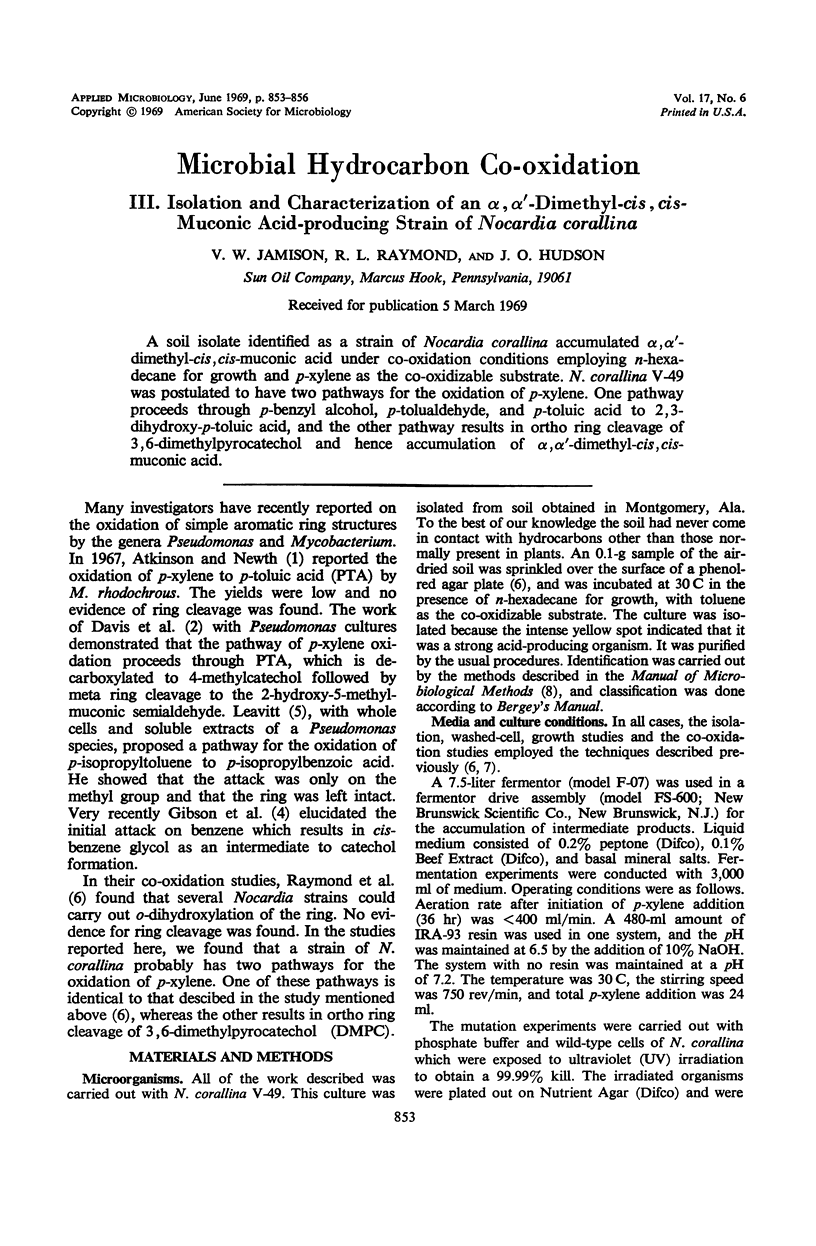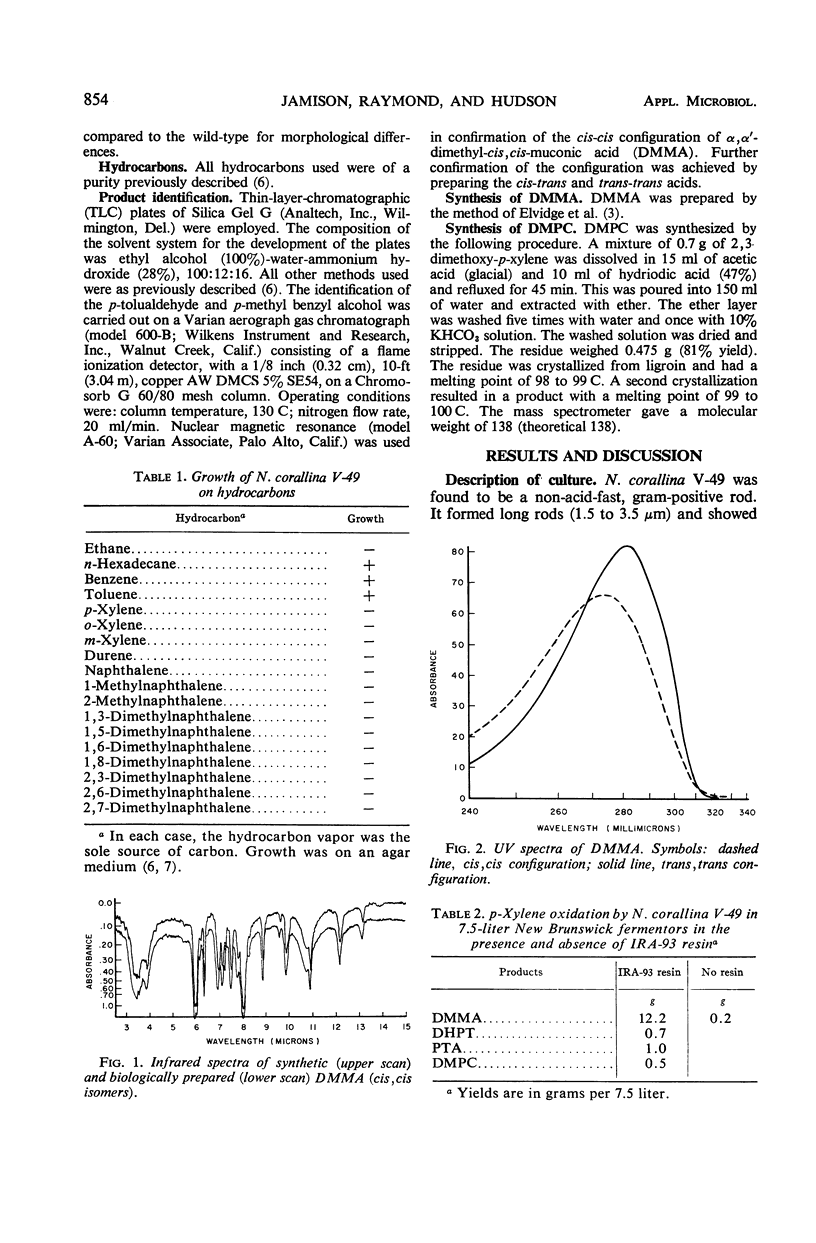Abstract
A soil isolate identified as a strain of Nocardia corallina accumulated α, α′-dimethyl-cis, cis-muconic acid under co-oxidation conditions employing n-hexadecane for growth and p-xylene as the co-oxidizable substrate. N. corallina V-49 was postulated to have two pathways for the oxidation of p-xylene. One pathway proceeds throughp-benzyl alcohol, p-tolualdehyde, and p-toluic acid to 2, 3-dihydroxy-p-toluic acid, and the other pathway results in ortho ring cleavage of 3, 6-dimethylpyrocatechol and hence accumulation of α,α′-dimethyl-cis, cis-muconic acid.
Full text
PDF



Selected References
These references are in PubMed. This may not be the complete list of references from this article.
- Davis R. S., Hossler F. E., Stone R. W. Metabolism of p- and m-xylene by species of Pseudomonas. Can J Microbiol. 1968 Sep;14(9):1005–1009. doi: 10.1139/m68-166. [DOI] [PubMed] [Google Scholar]
- Gibson D. T., Koch J. R., Kallio R. E. Oxidative degradation of aromatic hydrocarbons by microorganisms. I. Enzymatic formation of catechol from benzene. Biochemistry. 1968 Jul;7(7):2653–2662. doi: 10.1021/bi00847a031. [DOI] [PubMed] [Google Scholar]
- Raymond R. L., Jamison V. W., Hudson J. O. Microbial hydrocarbon co-oxidation. I. Oxidation of mono- and dicyclic hydrocarbons by soil isolates of the genus Nocardia. Appl Microbiol. 1967 Jul;15(4):857–865. doi: 10.1128/am.15.4.857-865.1967. [DOI] [PMC free article] [PubMed] [Google Scholar]
- Raymond R. L., Jamison V. W., Hudson J. O. Microbial hydrocarbon co-oxidation. II. Use of ion-exchange resins. Appl Microbiol. 1969 Apr;17(4):512–515. doi: 10.1128/am.17.4.512-515.1969. [DOI] [PMC free article] [PubMed] [Google Scholar]


